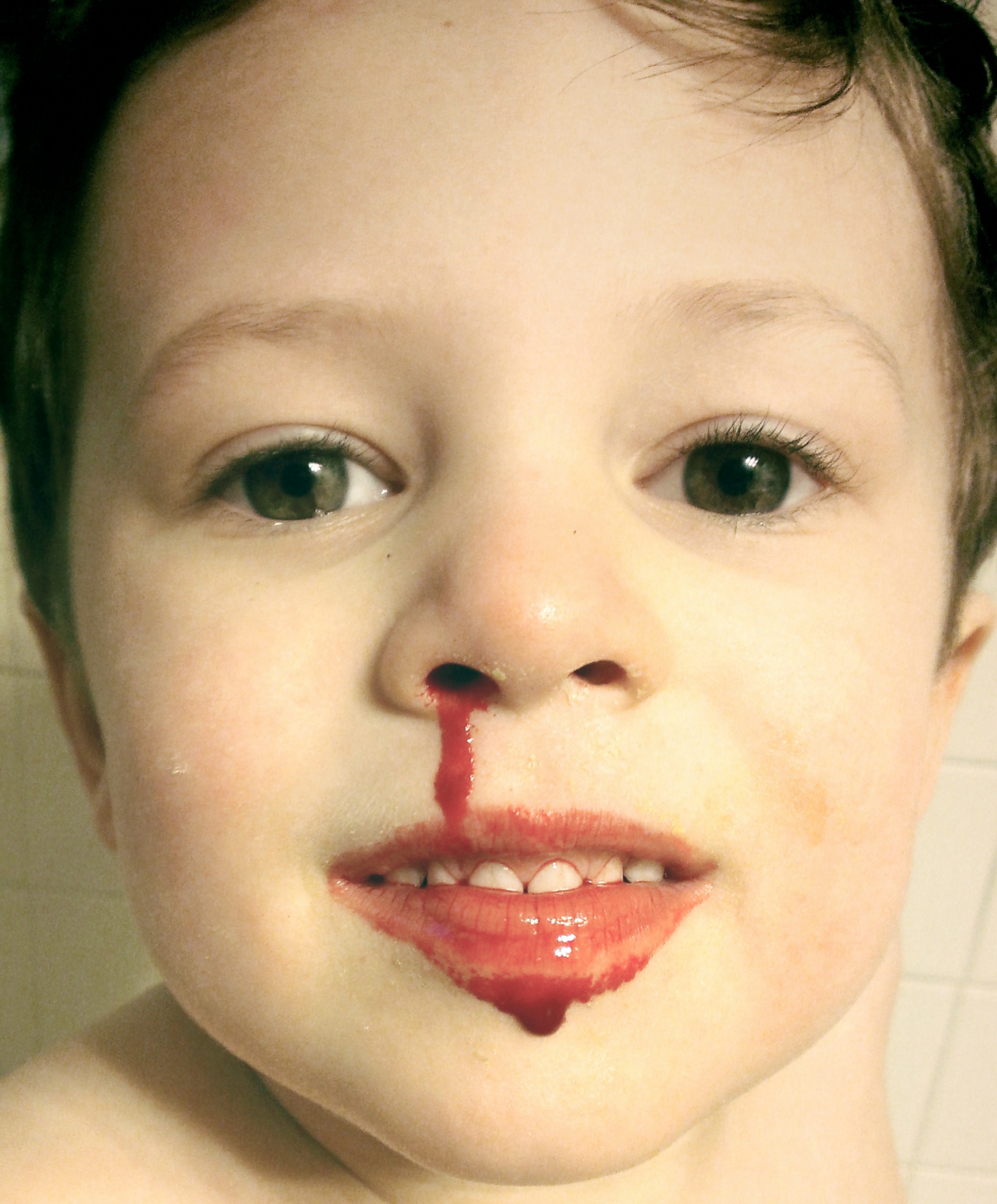What is EPISTAXIS ( Nosebleed نکسير)?
The nose is an area of the body that contains many tiny blood vessels that can break easily. Nosebleeds can occur at any age but are most common in children aged 2-10 years and adults aged 50-80 years. Usually the nosebleeds or epistaxes begin in the lower part of the septum, wall that separates the two nostrils of the nose. The septum contains blood vessels that can be broken by a blow to the nose or the edge of a sharp fingernail.. It is common in dry climates. Dryness may result in crusting, cracking, and bleeding. This can be prevented by placing a light coating of petroleum jelly or an ointment in the nose.
posterior nosebleeds are often more severe and almost always require a physician’s care. Posterior nosebleeds are more likely to occur in older people, persons with high blood pressure, and in cases of injury to the nose or face.
How to stop Epistaxis or nosebleed?
- Stay calm, or help a young child stay calm. A person who is agitated may bleed more profusely
- Keep head higher than the level of the heart. Sit up.
- Lean slightly forward so the blood won’t drain in the back of the throat.
- Gently blow any clotted blood out of the nose. Spray a nasal decongestant in the nose.
- Using the thumb and index finger, pinch all the soft parts of the nose. Do not pack the inside of the nose with gauze or cotton.
- Hold the position for eight minutes. If it’s still bleeding, hold it again for an additional 8 minutes.
What are the causes of recurring nosebleeds?
- Allergies, infections, or dryness that cause itching and lead to picking of the nose.
- Vigorous nose-blowing that ruptures superficial blood vessels.
- Clotting disorders that run in families or are due to medications.
- Drugs (such as anticoagulants or anti-inflammatories).
- Fractures of the nose or the base of the skull. Head injuries that cause nosebleeds should be regarded seriously.
- Hereditary hemorrhagic telangiectasia, a disorder involving a blood vessel growth similar to a birthmark in the back of the nose.
- Tumors, both malignant and nonmalignant, have to be considered, particularly in the older patient or in smokers.
When should an ENT specialist be consulted?
If frequent nosebleeds are a problem, it is important to consult an ENT Dr. An ear, nose, and throat specialist will carefully examine the nose using an endoscope. Two of the most common treatments are cautery and packing the nose. Cautery is a technique in which the blood vessel is burned with an electric current, silver nitrate, or a laser. Sometimes, a doctor may just pack the nose with a special gauze or an inflatable latex balloon to put pressure on the blood vessel.
Tips to prevent a nosebleeds
- Keep the lining of the nose moist by gently applying a light coating of petroleum jelly or an ointment with a cotton swab three times daily, including at bedtime.
- Keep children’s fingernails short to discourage nose-picking.
- Counteract the effects of dry air by using a humidifier.
- Use a saline nasal spray to moisten dry nasal membranes.
- Quit smoking.
Tips to prevent rebleeding after initial bleeding has stopped
- Do not pick or blow nose.
- Do not strain or bend down to lift anything heavy.
- Keep head higher than the heart.
If rebleeding occurs:
- Attempt to clear nose of all blood clots.
- Spray nose four times in the bleeding nostril(s) with a decongestant spray.
- Repeat the steps to stop an anterior nosebleed.
- Call a doctor if bleeding persists or if it occurs after an injury to the head.

